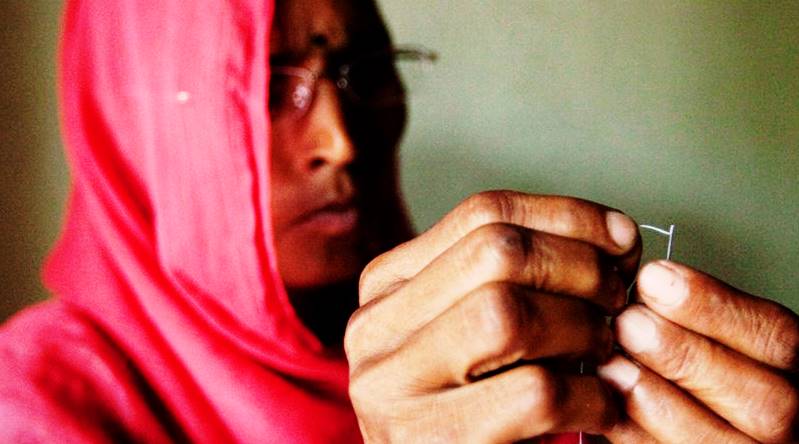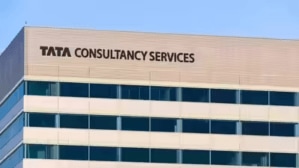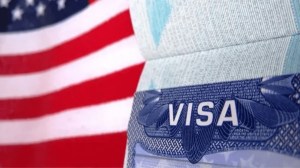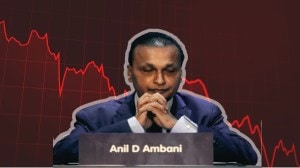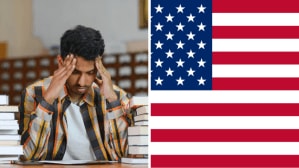Eyes are an important organ for humans. Although it is hard to imagine a single second without eyesight, poor vision is directly related to the driving hazards that are reported regularly. According to a report by the Ministry of Road Transport and Highways, over 90 per cent of sensory information available to the driver is thought to be visual, and it is estimated, globally 60 percent of traffic accidents can be attributed to impaired vision.
According to the 2019 Road Accident Report, 4.49 lakh traffic accidents, 1.51 lakh mortalities, 4.51 morbidities were reported. Trucks, and buses accounted for almost 16% of all road accidents. Over half of the Indian drivers responsible for road accidents have at least one type of visual disorder, and this further increases 81 per cent chances of accidents. A poor eyesight if left untreated can lead to many social and health implications. FinancialExpress.com spoke to Ella Gudwin, CEO, VisionSpring, has provided more than 5 million pairs of vision correcting eyeglasses, comprising ready-made readers and prescription eyeglasses, creating 1 billion in economic impact in 23 states with over 650 NGO, corporate, government and health partners including eye hospitals. Excerpts:
What kind of healthcare gap do you see persist in, especially in Indian or South Asian society?
The gap in India is like what we see in many places. About 500 million people in India lack access to eyeglasses. In areas of higher income segment, the eyeglasses coverage rate is around 60 per cent or 70 per cent, which means only 60 per cent to 70 per cent of the people who need glasses have them. However, in the lower income segment where VisionSpring is working, we usually witness that as much as 90 per cent of the people in the community who need glasses don’t have them.
As you said that the people of the lower section of the society can’t afford so many medical facilities. Do you think VisionSpring is able to bridge the gap between higher and lower income segments?
When we talk about creating affordable eyewear access, the main issue is accessibility. First of all, the glasses have to be available and they need to be convenient. The access to eyeglasses is confined to hospitals and clinics, or in the four walls of optical shops. But the reality is, people aren’t sick. When your eye is getting slowly blurry or a cataract is slowly coming in, it’s not painful and people adapt to the symptom and they don’t treat it as an urgent issue. For the majority of the people going to a hospital is not convenient. Such people often assume that eyeglasses are expensive. While in reality it could cost as low as Rs. 70. VisionSpring works on demedicalizing access to glasses and we focus on getting reading glasses to people at an affordable price then also prescription glasses at an affordable price.
When we are talking about demedicalising glasses, don’t you think it might lose the status of urgent medical requirement?
In Europe, America and Australia you can walk into a book shop, train station, a gas station, a pharmacy and you can get reading glasses. I can pick it off the shelf without a doctor’s prescription. As we turn 35 or 40 our vision gets blurry. Why? Because we have a muscle in our eye that gets tight and our sight becomes weaker. Age-related blurry vision, presbyopia, can be corrected with just a reading glass. But if you’re a tailor, weaver, a mechanic, or in a profession that requires visual attention to intricate details you need proper eyesight. How sad will it be if you can’t earn money for your family because you can’t see within arm’s length. This is a very simple problem that we can solve. There are many complicated problems in the world. This is not one of them. There’s a very big misunderstanding.
Talking about misunderstanding, when you hit the ground and spread awareness about eyeglasses and eye care, what is the biggest barrier that you have found in India or in other countries?
Firstly, we talk about availability, affordability, and then we move on to other aspirations. People need to want it. Now there’s two pieces to aspiration. The first thing is people need to be aware. They have to know that their blurry vision can be fixed with glasses. Eyeglasses are pretty prevalent in Indian society hence there’s awareness. People already believe that blurry vision can be fixed with glasses. So the next problem is why don’t people act?
And there are three key reasons. The first one is the misunderstanding about price. Another, is around 30 per cent people believe that glasses make your eyes weaker. They don’t know that vision is progressive. It will get weaker with time, so if I get older I need a power 1, then we need a power of 1.5, then I need the power 2 and maybe when I’m 60, it will be flatline, and remain steady. If I’m a child and I need to get my glasses at age 10, my prescription will change every year or two until I’m about 20 or so and then it will stabilise. But then later it changes again, so the eye is changing all the time. Lastly, people are self-conscious about glasses. Children often fear getting teased if they wear glasses. Today I met one such child and I helped him in understanding why it is essential.
Along with awareness, what other initiatives are you taking to improve people’s quality of life?
What we really do is first, we bring vision screening to the people. I have done various screening programmes so far. Today, for example, we focused on truck drivers, till now we have screened around 5 lakh drivers and allied transportation workers. This is directly connected to road safety. When we normalise for truck drivers to wear glasses, particularly in high impact segments, we can avoid road hazards as we know that 90 percent of driving is visual. We also focus on working age adults who have a real need for near vision in professions like weaving, stitching etc. We also focus on factory workers.
As you mentioned earlier, road safety is connected to proper eyesight. Could you please elaborate further?
So we have found that one in every four drivers who come into our vision camps are failing the visual acuity requirement for their driving licence. This means they are on the road driving but they cannot see clearly at 20 and 30 metres. This is a big hazard, not just for the drivers and their own safety, but everybody they share the road with, including the pedestrians. When we do an assessment of the drivers we have found that after wearing glasses, they can drive properly and safely. If your vision is not very good and you’re driving at night and the lights of the vehicles ahead spreads out and the spectrum is reduced with glasses.
To achieve a goal especially in road safety, are you collaborating with other concerned organisations?
Yes, we are. Today we had a conversation with the All India Transportation Association. They are advocating for 10 million truck drivers and 4 million bus drivers from top to the bottom of India. We’re working with them. We also had a big conference a couple of weeks ago. This is very important. We want companies especially associated with transportation to have a clear vision fleet. You need to make sure that the drivers who are hauling your goods around India can see clearly and we’re really trying to build this understanding.
What is the impact of corrective eyeglasses on the skilled workers of the country and how are you taking part in it? Are you collaborating with any organisation like startups or MSMEs?
No, because it comes under the higher-income segment and VisionSpring focuses on people who are earning less than $4 a day.
What about the artisan groups and the small and medium groups?
So already we’ve screened the vision of half a million artisans which include weavers and their family members. As a matter of fact, we have done a lot in Odisha and Rajasthan.
Did you witness a similar pattern of eyesight issues in the silk workers?
Well, there’s two kinds; those who work on handlooms and those who work on auto looms. In order to work on an auto loom you need to have a proper eyesight as it requires detailed work. We did a study that showed that when tea pickers got glasses they had an increase in productivity of 22 to 32 percent, 22 on average. Women over age 50 could increase their productivity by 32 per cent. We found a similar pattern among workers in garment factories.
How do you generate funds for such a large-scale operation across the country?
VisionSpring is a social enterprise, so we take the best of the non-profit practices. We focus on impact and measuring our results and being very user-focused and community focused. And we take the best of the business practices, targets, goals, and manage our PNL. So we are a blend of both philanthropy and earned revenue. We have three kinds of earned revenue, terms of service contracts from employers, consumer contributions and we have sales because we sell glasses to government agencies, to hospitals, to other NGOs so they have a quality glass that they can put in their programmes. We also get funds from foundations and other high net worth donors including corporate foundations.
Are you also involved in the practices of Corporate Social Responsibility (CSR)?
Yes. We work with paid CSR activities. We work with about 35 companies and some of them are ICICI Bank, Shell, Mahendra, Apollo, Makemytrip, JSW, Piaggio, Bajaj.
What are your goals and hopes for the future of VisionSpring?
Well, we want to solve the problem of uncorrected refractive error. We also want to solve the problem of uncorrected blurry vision in a generation. There are a billion people around the world who need glasses and don’t have them. It’s a 700 year old technology and in one generation we should be able to solve it. We want to help India become clear vision India and make sure that the low-income segment has eyeglasses so that they can continue to care for their families. If you can imagine 500 million Indians have blurry vision and it means that 500 million people don’t have glasses. Can you imagine how much productivity and money India is losing? It’s wild.
So what is the message for the business community?
Imagine your company with no glasses. Now imagine India where the majority of people don’t have glasses. How would your company operate? How much productivity would you lose? How much money would you lose? How much would your financial statement be wrong? How much of your mobile phone interaction could you not see? Could you go on Paytm? You’d be locked out because you can’t see. I would say to the big banks – I challenge you to take your glasses off. What if your whole company took their glasses off for a day. Can you imagine the CEO or the boss saying, Oh yeah, sure, no problem, we’ll try that, no, they’d never do it. Why? Because they lose too much money. They couldn’t go without their glasses for one day. So why is this huge segment of society going without their glasses for their whole life?

